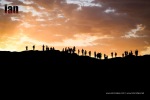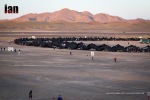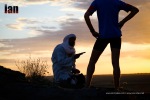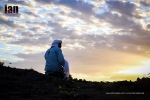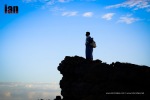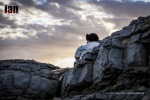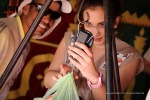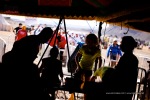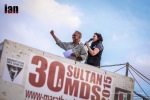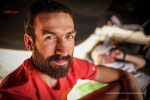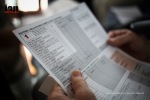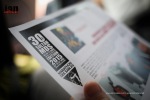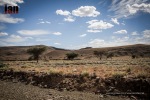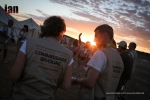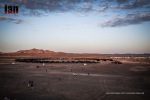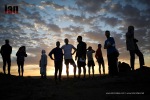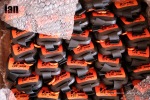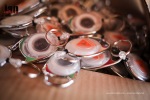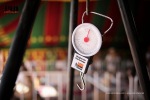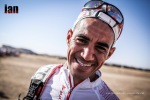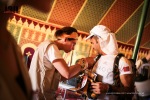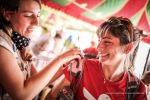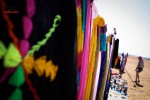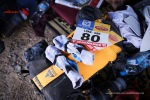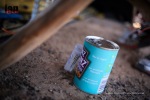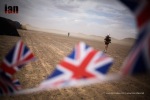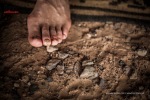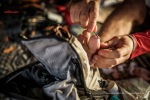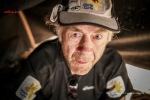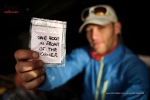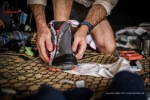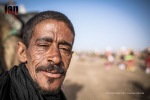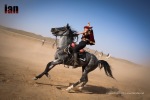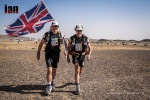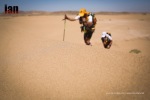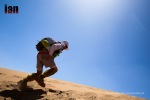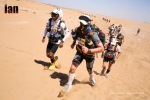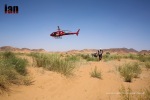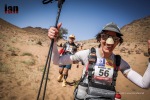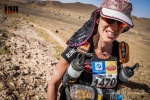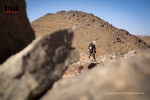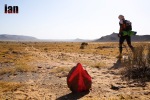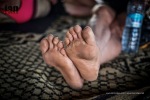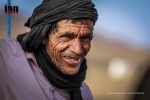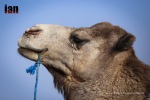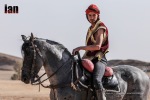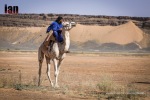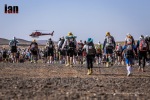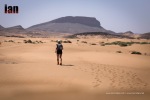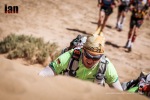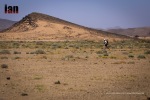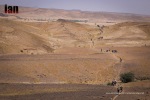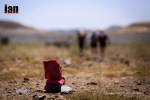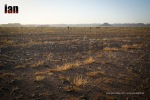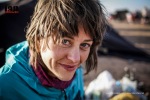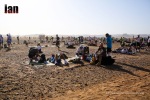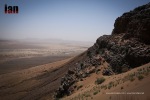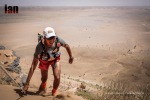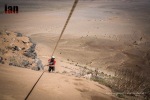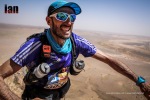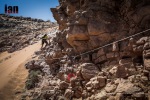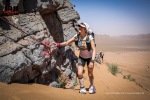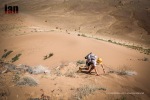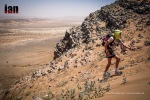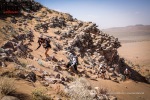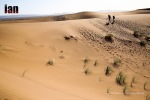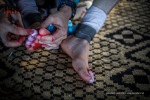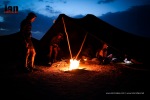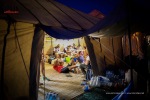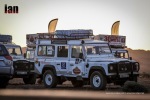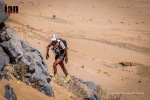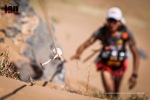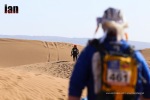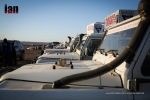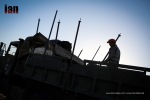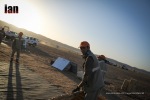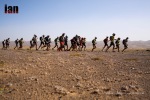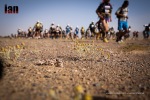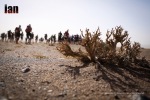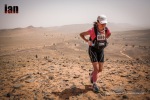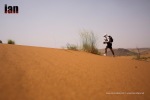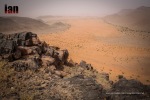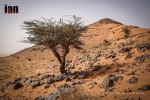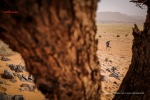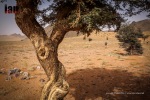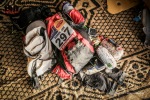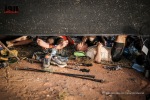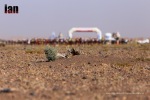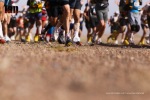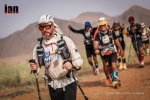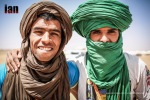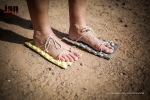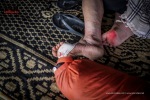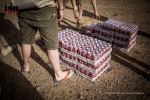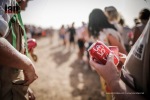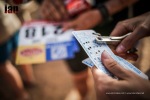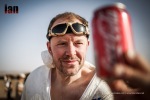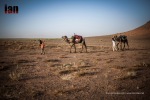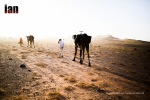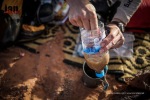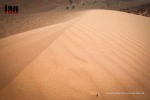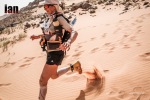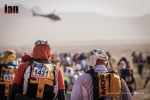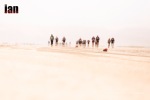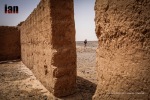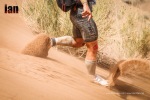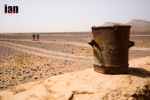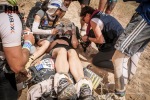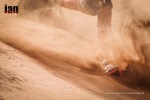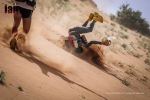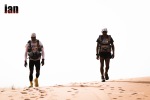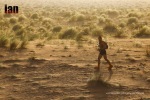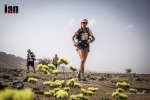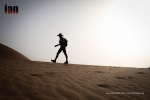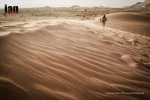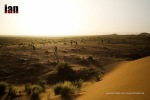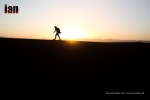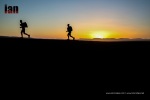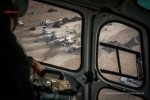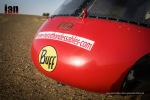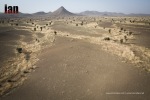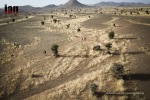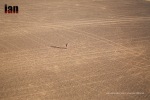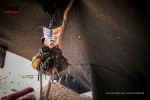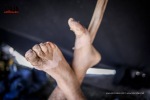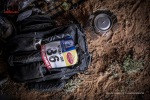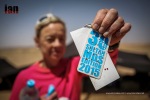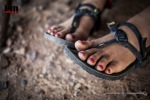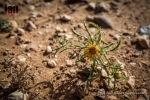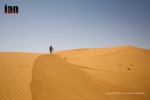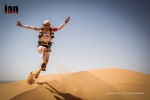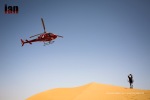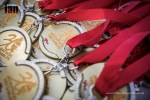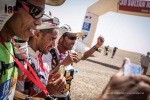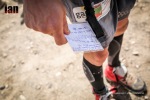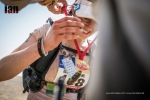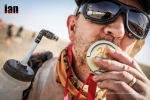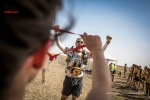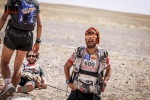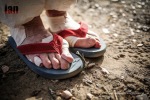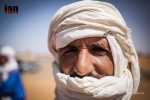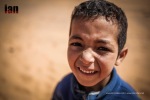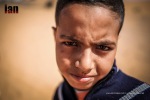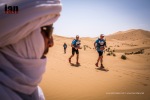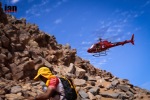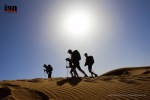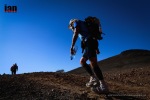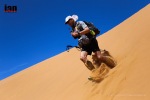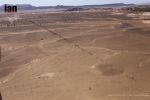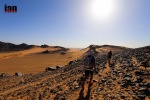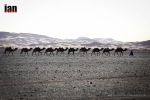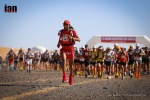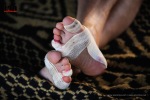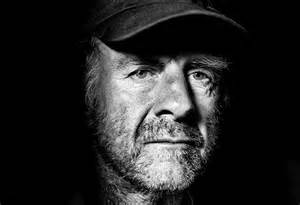
MDS, Marathon des Sables, The Toughest Race in the World… whatever you want to call it, the 30th edition is just around the corner. Think about it, 30-years. It’s quite incredible how this race has grown and has become ‘the’ multiday race to do irrespective of experience. It was the first and arguably is still the best offering an ultimate adventure for novice and experienced runner.
Many a runner has started a passion for running at MDS and as such; the race will always be an important landmark for many. But it’s more than a race. It’s an experience, it’s escape and it’s a challenge.

The combination of self-sufficiency, life in bivouac and running 250-km’s through the heat of the Sahara is something that those that have experienced it will never forget. It is the story of life, a story of men and women who have come to the heart of the desert to rid themselves of the superficial to keep only the essentials and get in touch with their true selves.
For the past three decades, some 18,000 runners have signed up for this experience, so, with the imminent running of the 2015 edition, it’s fair to say that race will see a great number of participants returning to ‘celebrate’ a very important birthday.

Lasting six days participants must be self-sufficient carrying everything they need in a pack. Water is provided but rationed and a tent (bivouac) is provided each evening that must be shared with seven other participants.
The 2015 edition of the race will be 250-km’s offering a series of challenges that will test the mind and body in equal measure. Dunes, djebels, ergs and dried-up lakes offer a stunning backdrop that must be traversed. Battling against sand, heat and above all the mind completing the 30th edition of the Marathon des Sables will be a dream come true for those who toe the line.

THE ROUTE for 2015
Stage 1 – Sunday 5th April
Here we have a very uneven playing field and a sufficient number of kilometers to make their presence felt. Competitors will have to run, avoid the obstacles and climb the surrounding uphill sections. The first dunes are between CP1 and CP2. It is fair to say that day-1 of the 30th MARATHON DES SABLES will be a long one.
Stage 2 – Monday 6th April
Those who imagine the desert to be flat are in for a surprise. Three steep little climbs form this second leg, with gradients reaching 30%… A new kind of roller-coaster ride which will open up landscapes that will be a sight to behold.
Stage 3 – Tuesday 7th April
Sand will be omnipresent today with some stony sections and some dried-up lakes. There will be a little something for everyone with some uphill sections here and there.
Stage 4 – Wednesday 8 / Thursday 9 April
A tough initial climb will hurt the legs, especially as it’s going to be a long day. Indeed this particular day will be the longest leg in the history of the MDS. And if that wasn’t enough, a climb of nearly a kilometer up a djebel awaits. At the summit runners will have 360° panoramic views. As for the descent, well it’s steep! After that, runners then traverse dunes, dried-up lakes and more dunes!
Stage 5 – Friday 10 April
Today’s route has a mixture of terrain that are hallmarks of the MDS, it’s a classic day!
Stage 6 -Saturday 11 April – SOLIDARITY UNICEF legs
For the majority of the participants, this leg is
a time for reflecting on the experience of this fine human adventure and is a united show of awareness before returning to civilization.
RUNNERS TO WATCH

Antoine Guillon was second three times, third once and fourth three times in the Diagonale des Fous in addition, he is always well placed in the UTMB. Offered a place by the UTWT, Antoine will try his luck in the 30th MDS for the first time. Antoine just placed 3rd at Transgrancanaria, so his form is good. Can he recover in time?

Christophe Le Saux never seazes to amaze me with his relentless racing calendar, he was 10th in 2014, 9th in 2013, 6th in 2012.
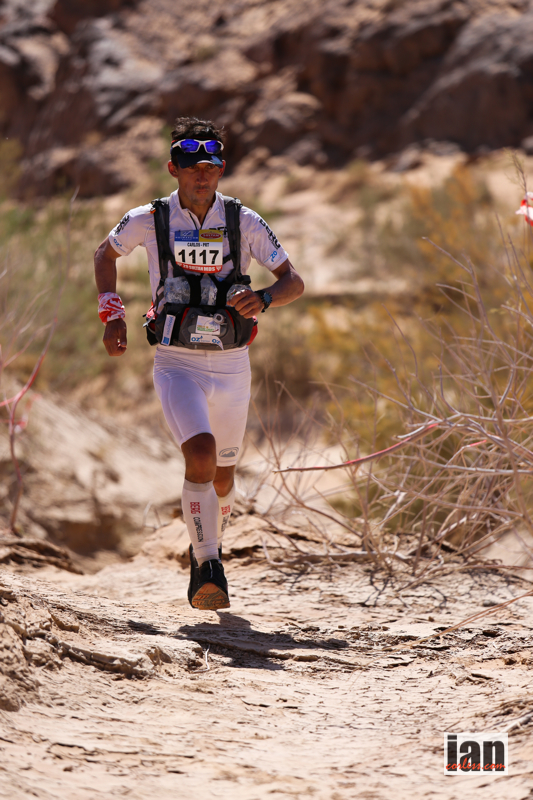
Carlos Sà is a regular at MDS and has a wealth of talent and experience to excel. He was 4th last year’s, 7th in 2013. 4th in 2012 and 8th in 2011.
Dave Mackey has been one of the top American ultra runners for many years and he has excelled at the 100-km distance. His participation at MDS marks a new departure for him and it will be interesting to see how he handles racing over multiple days.
Javier Teixido Marti-Ventosa is the 2014 winner of the Andorra Ultra-Trail Ultra-Mitic (112km).

Danny Kendall gets a nod from a UK perspective. He placed 5th last year and we can only hope that he moves up the rankings with a podium place. He knows the race, he knows the conditions and he understands survival in the Sahara; he just needs to bring it all together once again.
All six will be attempting to topple the Moroccan and Jordanian supremacy by keeping a close eye on the following:

Mohamad Ahansal like his brother, Lahcen needs no introduction. He has 15 participations in the MDS, which includes 5 victories. He has been 2nd no less than 9 times and 3rd in 2014.
Abdelkader El Mouaziz placed 7th in 2014 on his first participation, he will be looking to improve in 2015.
Samir Akhdar has had several participations at MDS placing 6th in 2011 and 7th in 2009.

Salameh Al Aqra is always smiling and a great presence in the race, he was 1st in 2012, 2nd in 2008, 2010, 2013 and 2014 and placed 3rd in 2009 and 2011.
In the female contingent:

Laurence Klein targets her 4th victory after making the podium in 2014 and 2013.

Meghan Hicks champion in 2013, missed 2014 through injury and will be setting her sights on a 2nd win.
Liza Howard is the holder of a number of 100-mile race records and American champion over 100km and 50 miles in 2011, should have what it takes to treat the United States to a third crown in a row after Nikki Kimball and Meghan Hicks.
Jolanda Linschooten gets a heads up from my friend Jeroen Krosse and he says, ‘one to watch’ for sure. So I agree, she is one to watch. Jolanda has been 2nd and 4th before!
Claire Morrisey is the British hope who returns after placing 7th in 2014.
INSPIRING STORIES:
Moroccan Lahcen Ahansal, ten-time winner of the
MDS between 1997 and 2007 is
making a comeback this year after six years
absence. “I wanted to hook back up with this race through
a goal that isn’t purely competitive, but also human”, admits
the athlete who has agreed to act as a guide to the partially
sighted German runner, Harald Lange. “After pulling off the
challenge of securing 10 victories, I now want to rack up 20
participations. And why not be around for the 40th and 50th
editions too?” It should be said that Lahcen has not forgotten
his encounter with this legendary race, which has transformed his life. “I looked on with curiosity and amazement as the 23 athletes took the start of the first edition in 1986. From then on, I constantly dreamt that I, a nomadic child, would participate in this race. It has spurred on my life and created in me such a strong desire for sporting and human emancipation that I moved mountains to make my dream a reality some seven years later. It’s thanks to this race that I’ve become the man I am today.” Also of note, is the fact that another blind runner will participate in this edition as Didier Benguigui is returning with his guide, Gilles Clain, to celebrate his 11th edition.
The “4 Dinosaurs MDS” team comprises two French runners, Christian Ginter and François Cresci, one Moroccan, Karim Mosta and one Italian, Paolo Zubani, none of whom wanted to miss the 30th anniversary of the SULTAN MARATHON DES SABLES. Between them, these four passionate runners already boast a total of 105 participations, which amounts to 27 out of 29 editions for the restaurant owner-chef Christian Ginter and 26 for the other three. “The idea of creating a team of veterans came about in the tent last year”, beams Karim Mosta, the cheerful leader of this group of friends, who wouldn’t miss this key stage
The famous British explorer, Sir Ranulph Fiennes, is embarking on a new adventure at 71 years of age. After earning the title of first man to reach the North and South Poles via land, the first person to traverse the Antarctic entirely on foot and the oldest Briton to climb Everest at 65 years of age, he now wants to become the oldest Briton to etch his name on the list of SULTAN MARATHON DES SABLES 2015’ medalists.
At 83 years of age, Joseph Le Louarn will be the most senior participant in this 30th edition. “I said that I’d stop in 2012, at 80, but with the energy drummed up by this anniversary, I couldn’t resist,” smiles the runner who has always loved ‘ambitious projects’. Indeed some three years ago he was quoted as saying “Card games and meals for retired people aren’t for me. I need to move; I need goals. I want to stay fit for as long as possible.”
A native of Luxembourg, Simone Kayser Diederich, 3-time champion of the MARATHON DES SABLES (2002, 2004 and 2005), will take the start of this 30th edition to celebrate her 60th birthday and her 14th participation. It’s a similar scenario for Moroccan Nadia Dadoun, 56, who will celebrate her 16th participation in this SULTAN MARATHON DES SABLES 2015, which is a record number of entries among the event’s female contingent.

CRAZY STATS:
- 150 volunteers to supervise the race,
- 450 general support staff,
- 120,000 liters of bottled mineral water,
- 300 Berber and Saharan tents,
- 120 all-terrain vehicles and trucks,
- 2 Squirrel helicopters and 1 Cessna plane,
- 8 Transavia ‘MDS special’ commercial planes,
- 30 buses,
- 4 dromedaries,
- 1 incinerator lorry for burning waste,
- 5 quad bikes to monitor race environment and safety,
- 72 medical staff,
- 2.3kms of Elastoplast,
- 12,200 compresses,
- 6,000 painkillers,
- 150 liters of disinfectant,
- 1 editing bus,
- 5 cameras,
- 1 satellite image station,
- 10 satellite telephones,
- 30 computers, fax and internet,
- 18,000 competitors since 1986
- 30% returning competitors, 70% international, 30% French,
17% women, 45% veterans,
30% in teams,
10% walkers,
90% alternate walking and running,
- 14 km/hr.: average maximum speed, 3 km/hr.: average minimum speed,
- 15 years of age for the youngest competitor and the oldest, 83!

QUOTES
- “The MARATHON DES SABLES is the United Nations. The runners come from all over the world, share the same emotions and help one another. All the boundaries are erased. We should take inspiration from it.” – Kirk McCall (United States)
- “This event isn’t just a sporting activity. It’s a mental and philosophical process. In the desert, nature puts us back in our place at the heart of this environment. The MARATHON DES SABLES opens up new perspectives to us. People often think we’re crazy, but maybe they’re the crazy ones!” – Fernando Jose Castro Cabral (Brazil)
- “The MARATHON DES SABLES represents Mecca. I come here for an annual pilgrimage. It purifies me.” – Amine Kabbaj (Morocco)
- “Running in the desert purges me and enables me to empty my mind. I want to discover the desert by experiencing it from the inside. Each day, I recite a poem along the course. To think about poetry whilst running is a fantastic mental luxury. To run and be elsewhere through your thoughts… The sobriety of the desert is a source of inspiration.” – Duc Le Quang (Vietnam)
- “In the MARATHON DES SABLES, you learn to rediscover and appreciate the simple pleasures. On top of that there is this solidarity between the runners. You run and you come across someone from Colombia, Portugal or China. You don’t know them but you share a moment with them. These encounters are worth all the money in the world.” – Nicolas Esterhazy (Belgium)

Twenty-Nine years of victories.
Here is a who’s who of those 29-years.
1986 – Michel GALLIEZ (FRANCE) – Christiane PLUMERE (FRANCE)
1987 – Bernard GAUDIN (FRANCE) – Marie-Ange MALCUIT (FRANCE)
1988 – Bernard GAUDIN (FRANCE) – Marie-Ange MALCUIT (FRANCE)
1989 – Hassan SEBTAOUI (FRANCE) – Marie-Claude BATTISTELLI (FRANCE)
1990 – Hassan SEBTAOUI (FRANCE) – Claire GARNIER (FRANCE)
1991 – Hassan SEBTAOUI (FRANCE) – Monique FRUSSOTE (FRANCE)
1992 – Mohamed BENSALAH (MOROCCO) – Monique FRUSSOTE (FRANCE)
1993 – Mohamed BENSALAH (MOROCCO) – Irina PETROVNA (RUSSIA)
1994 – André DERKSEN (RUSSIA) – Valentina LIAKHOVA (RUSSIA)
1995 – André DERKSEN (RUSSIA) – Béatrice REYMANN (FRANCE)
1996 – André DERKSEN (RUSSIA) – Anke MOLKENTHIN (GERMANY)
1997 – Lahcen AHANSAL (MOROCCO) – Rosanna PELLIZZARI (ITALY)
1998 – Mohamad AHANSAL (MOROCCO) – Rosanna PELLIZZARI (ITALY)
1999 – Lahcen AHANSAL (MOROCCO) – Lisa SMITH (USA)
2000 – Lahcen AHANSAL (MOROCCO) – Pascale MARTIN (FRANCE)
2001 – Lahcen AHANSAL (MOROCCO) – Franca FIACCONI (ITALY)
2002 – Lahcen AHANSAL (MOROCCO) – Simone KAYSER (LUXEMBOURG)
2003 – Lahcen AHANSAL (MOROCCO) – Magali JUVENAL (FRANCE)
2004 – Lahcen AHANSAL (MOROCCO) – Simone KAYSER (LUXEMBOURG)
2005 – Lahcen AHANSAL (MOROCCO) – Simone KAYSER (LUX)
2006 – Lahcen AHANSAL (MOROCCO) – Géraldine COURDESSE (FRANCE)
2007 – Lahcen AHANSAL (MOROCCO) – Laurence KLEIN (FRANCE)
2008 – Mohamad AHANSAL (MOROCCO) – Touda DIDI (MOROCCO)
2009 – Mohamad AHANSAL (MOROCCO) – Touda DIDI (MOROCCO)
2010 – Mohamad AHANSAL (MOROCCO) – Monica AGUILERA (SPAIN)
2011 – Rachid EL MORABITY (MOROCCO) – Laurence KLEIN (FRANCE)
2012 – Salameh AL AQRA (JORDAN) – Laurence KLEIN (FRANCE)
2013 – Mohamad AHANSAL (MOROCCO) – Meghan HICKS (USA)
2014 – Rachid ELMORABITY (MOROCCO) – Nikki KIMBALL (USA)
RACE SCHEDULE 2015
- 3 April 2015 – Leave country of residence/Morocco – Arrival in Ouarzazate, bus transfer to 1st bivouac
- 4 April 2015 – Administrative, technical and medical checks – Day to acclimatize
- From 5 to 10 April 2015 – Race in progress (The self-sufficiency begins from breakfast on the 1st leg)
- 11 April 2015 – Solidarity UNICEF leg – (end of dietary self-sufficiency) – Transfer to Ouarzazate
- 12 April 2015 – Day of relaxation
- 13 April 2015 – Return to country of residence

Marathon des Sables – A history in brief

1984: At 28 years of age, Patrick Bauer decided to make for the Sahara to try to traverse a 350km expanse of uninhabited desert, on foot, alone, where he wouldn’t come into contact with a single village, oasis or watering place. Totally self-sufficient, with a rucksack weighing 35kg and containing water and food, he set off on a journey that was to last 12 days. It was the starting point of what was to become the MARATHON DES SABLES.
1986: The creation of the first MDS in the Moroccan Sahara. The 23 pioneers who took the start never imagined that their footprints would mark the start of a legendary event, which has today become a must among the major adventure sport meets. The creation of a non-mechanical competition in the Moroccan sands offers adventure runners a wealth of new prospects.

1987: Creation of the MDS logo: the face of a runner covered by a keffiyeh, the eyes protected by a pair of sunglasses and the pipette from the runner’s water container clenched between the teeth.
1989: 170 competitors take the start of the race.
1991: The gulf drama puts the MDS at a disadvantage and the financial partners withdraw. Fortunately some runners answer the call. For these competitors, the true victory lies in meeting athletes from different backgrounds and their communion in the desert around the same goal. Sport proves once again that it can bring people together and create bonds.

1992: One and the same regulation for everyone. This year sees the establishing of unexpected draconian tests, to ensure that each participant properly transports all his or her gear from one end of the course to the other. A 30-point charter is drawn up.
First participation by the Moroccan Lahcen Ahansal
1994: Arrival of the Doc Trotters at the event.

1995: 10th anniversary. Since the start, over 1,500 men and women have left their footprint and their passion in the desert. Installation of water-pump for the inhabitants of the village of Ighef n’rifi (South of Er-Rachidia) – an idea by competitor Gilles Flamant and backed by Rolland Barthes and Patrick Bauer. Its success is to be repeated again and again
1996: First participation by Mohamed, a younger sibling of Ahansal. The two Moroccan brothers set off together and rank 4th and 5th respectively.
1997: This year heralds the start of the Ahansal saga. Morocco is honored with Lahcen’s first victory. He beats his two pursuers by nearly 30 minutes, despite them being international long-distance running champions.
1999: A mobile hospital on the MDS comes into being. There are around thirty practitioners on the ground, with doctors and nurses joining the caravan. A dedicated helicopter and ten all-terrain vehicles track the competitors each day. On- board these vehicles there are doctors of course, as well as high-tech equipment. The village boasts a genuine field hospital.

2000: Internet puts in an appearance in the large MDS village. The organization decides to broadcast the texts and photos of the race live, day after day. The competitors can communicate with their nearest and dearest and receive messages of encouragement.
2001: For the first time the long leg, traditionally called “The 70”, exceeds the 80km barrier to reach 82km. The threshold of 240km is also surpassed since the 16th MARATHON DES SABLES spans 243km. Another first relates to the fact that there are no Moroccans on the podium this year.
2002: This edition is punctuated by a sandstorm, involving headwinds, which lasts the entire week. The doctors invent a machine for ‘low pressure cleansing’ to rinse out the runners’ eyes. Despite the difficult conditions, there are few retirements to report as the wind considerably reduces the temperature.
2005: The Luxembourg runner Simone Kayser is the first woman to win 3 MARATHON DES SABLES. For this 20th edition, the total number of runners exceeds 700 for the first time, with no fewer than 777 runners taking the start.

2006: A drying wind and very high humidity levels cause damage to the runners’ bodies. Despite additional allocations of water, a whole series of retirements ensues. There are a total of 146 retirements ultimately, which equates to double that of the previous record… Race management decides to shorten the long leg by over 10km given how tired the runners seem.
2008: The Solidarité MDS association is created. The aim: to develop projects to assist children and disadvantaged populations in the domains of health, education and sustainable development in Morocco.
2009: MDS is disrupted by flooding and the 1st and 6th stages are not able to take place. To avoid the flood zones, the organization is obliged to improvise new legs on a day-to-day basis. In this way, the edition goes down in legend for its 3rd leg, which is the longest ever contested: 92km of sand, loose stones and rocks… The leg even sees the retirement of Lahcen Ahansal… At the prize giving the 2 winners admit to having competed in their hardest MDS. However, it was also the shortest: 202km.

2010: For its 25th edition, the number of participations reaches a record high of 1,013 participants. It is to be the longest MARATHON DES SABLES. It spans 250 kilometers with a course considered by former entrants to be the most difficult ever organized.
2012: A dramatic turn of events on the longest leg as the then leader in the overall standing, Rachid El Morabity (MAR) injures himself one kilometer from the finish. Medical examinations reveal a serious muscular lesion in the quadriceps. After over five years on the 2nd or 3rd step of the podium, Jordanian Salameh Al Aqra secures the title.
2013: 1,027 competitors on the start line make this a new participation record. New feature: a final “Charity” stage sponsored by UNICEF and traversing the Merzouga dunes round off the race. Sportswise, Mohamad Ahansal and Megan Hicks are the champions of the 231.5km event. On a human level, all of the finishers pull off their crazy bet.

2014: 2011 winner, Moroccan Rachid El Morabity (MAR) wins the overall ranking and takes Mohamad Ahansal’s crown. In the women’s category, another American stamps her mark, Nikki Kimball. The French revelation is one Michaël Gras, 22 years of age, 8th overall and top Frenchman. A major athletics star, Moroccan Hicham El Guerrouj lines up to take the start of Saturday’s Unicef Charity leg.
Content and information provided by ©marathondessables
FOLLOW THE 2015, 30th EDITION on this WEBSITE in words and images.




